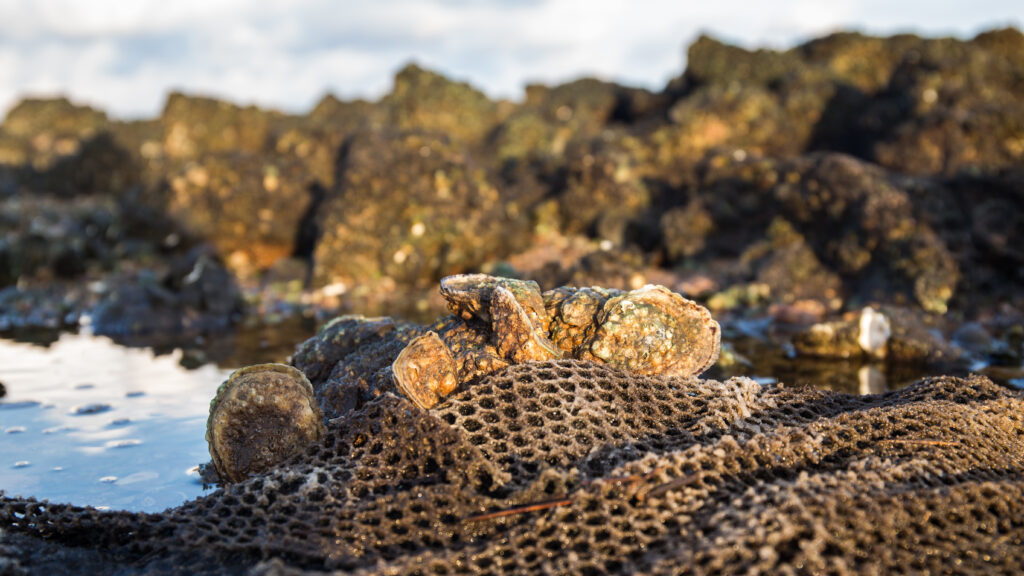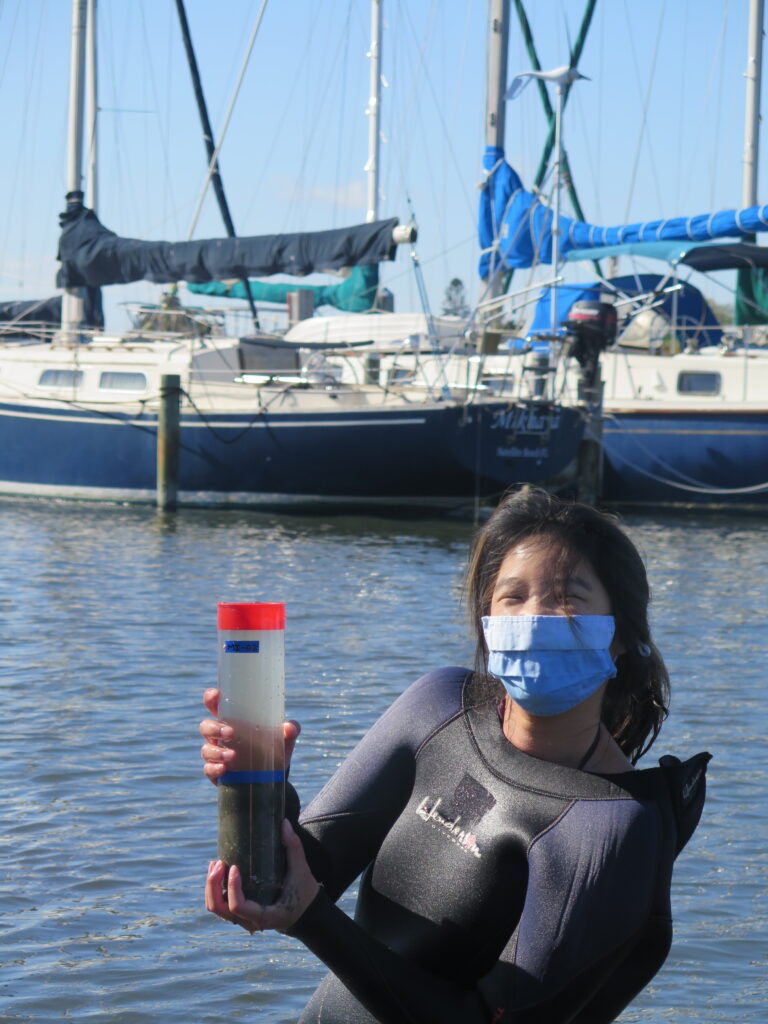OYSTERS
HOW DO OYSTERS REMOVE NITROGEN?
Nitrogen is natural and necessary, yet nitrogen levels above natural levels can cause algal blooms and eutrophication of coastal systems. Bivalve shellfish, including oysters (Crassostrea virginica), can help mitigate the effects of too much nitrogen through filtration, accumulation of nitrogen in their shells and tissues, and enhancement of sediment denitrification. Denitrification is a natural process that converts nitrogen which can be used by algae, like nitrate (NO3–), to harmless di-nitrogen gas (N2). Strategies to remove nitrogen and improve degraded water quality are multi-faceted, and impacts vary depending on the system’s location, hydrology, and nitrogen load. Restoration and aquaculture of bivalve shellfish, like oysters, represent one potential tool for reducing nitrogen and improving water quality in coastal systems. The purpose of this document is to describe how oysters and oyster reefs remove nitrogen. Because oysters build reef structure, which traps organic matter and serves as habitat for other organisms, they may have a different effect on nitrogen removal than other shellfish. The document is intended for policymakers, environmental organizations, and coastal residents who want to know about oysters’ role in improving water quality through nitrogen removal. Click here to read more about this work.

OYSTER AQUACULTURE AND OYSTER REEFS HAVE COMPARABLE DENITRIFICATION RATES



